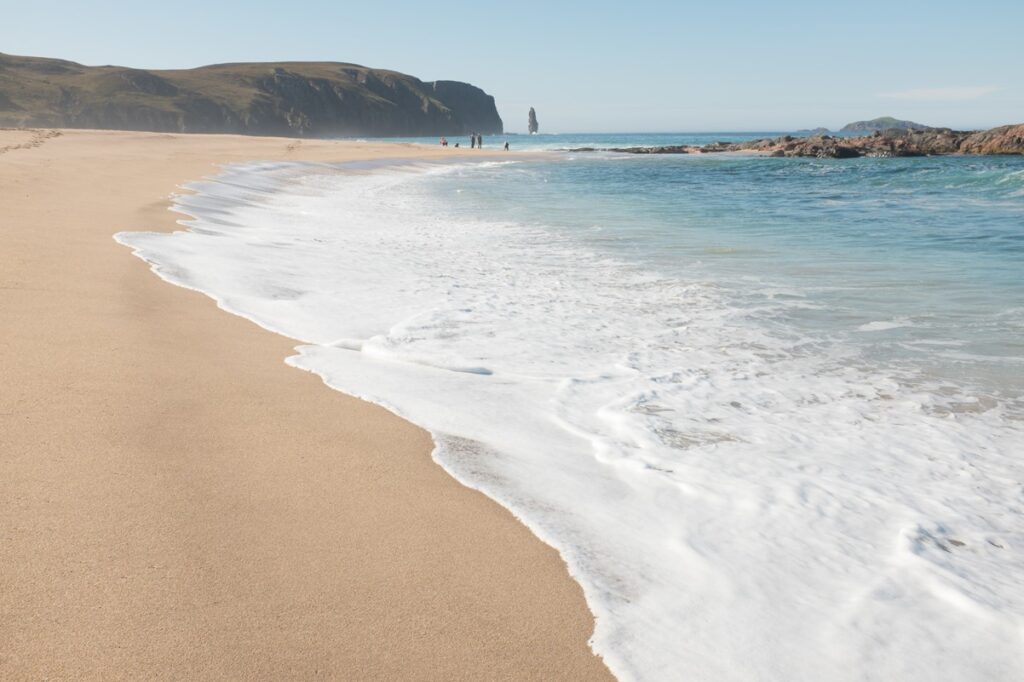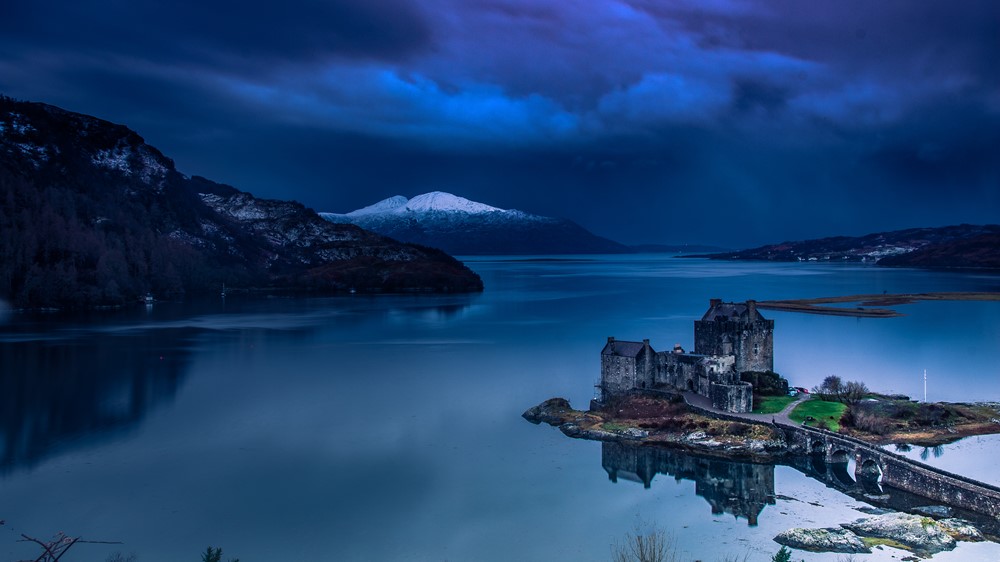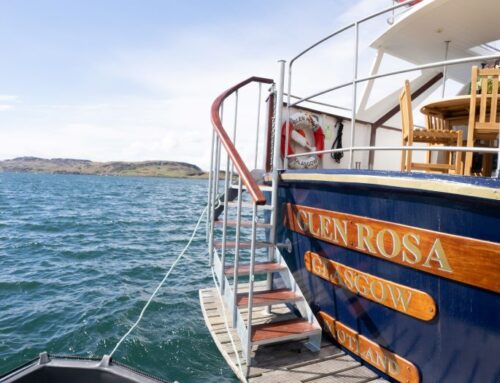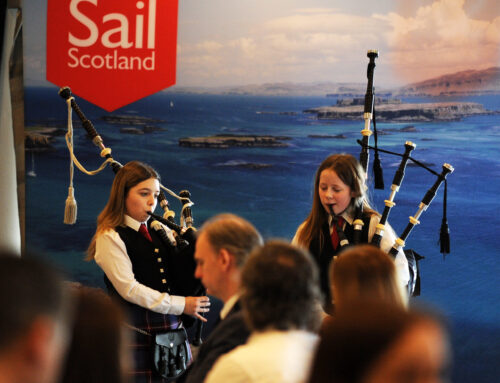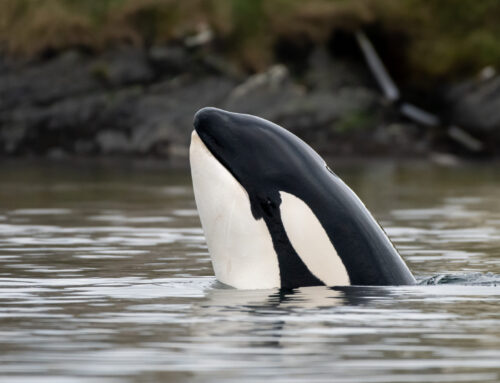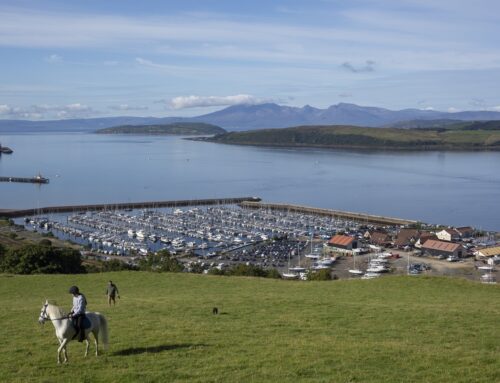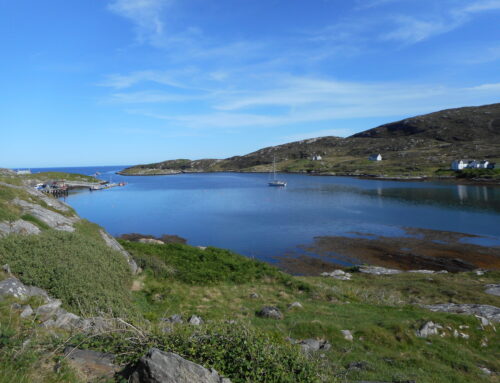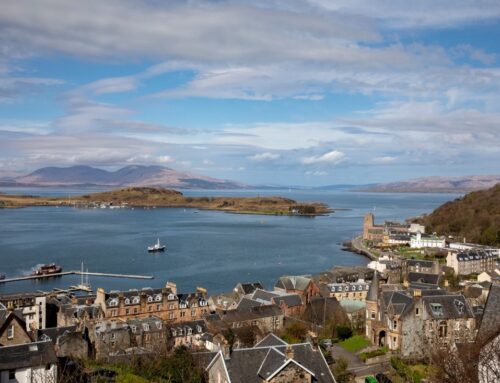From its colossal castles to its storied shores, Scotland is a land steeped in history, folklore and legends – but some of them are a little more macabre than others…
With Halloween fast approaching, we’ve taken the opportunity to delve into Scotland’s shadows, uncovering spine-tingling stories of medieval massacres, sinister spectres, and unexplained occurrences.
Are you brave enough to explore the spookier side of sailing Scotland with our guide to some of its most haunted places?
Plan your own unforgettable adventure sailing Scotland and make sure you share them with us on social media by tagging them with #MustSeaScotland or uploading them to our gallery – but please be sure to follow all guidance and #RespectTheDestination.
Sandwood Bay
Often called the most beautiful beach in Britain, Sandwood Bay is a striking stretch of pink sand flanked by colossal cliffs and backed by the large dunes of Sandwood Loch. Unreachable by road, it’s also known as Britain’s most remote beach – a fitting home for the countless spectral sailors said to walk its sands after being shipwrecked there in the years before the lighthouse at Cape Wrath was established. Pay a visit, stand alone on its dunes, admire the haunting beauty of the sea stack of Am Buachaille (“the shepherd”), but keep a keen ear out for the soft slap of footsteps on wet sand…
Eilean Donan Castle
Today it’s a recurring feature on shortbread tins and calendars the world over, but Eilean Donan Castle has a surprisingly violent history. More than a few sorry souls have met their end on the cold stone of the castle since its construction in the 13th century – and a few of them have never left. A Spanish soldier, killed in a siege during the Jacobite Rebellion of 1715, has been spotted walking through what is now the visitor centre, his severed head clutched beneath his arm…
(c) Pete Stevens
St Andrews Cathedral
Fife
Take a walk amongst the colossal, crumbling ruins and centuries-old graves of St Andrews Cathedral and it’s hard not to feel dread creep up your spine. Legend has it that stonemasons, repairing St Rule’s Tower within the cathedral in the mid 1800s, broke through into a sealed chamber and found several coffins. One lay open and contained the miraculously well-preserved body of a young woman, dressed in clothes of gleaming white. Ever since, it’s said, the pale ghost of The White Lady has walked the grounds of the cathedral, unable to find peace, guarding the site of her desecrated tomb…
Dunstaffnage Castle
A brute mass of masonry perched on a promontory on the Firth of Lorn, 13th century Dunstaffnage Castle is a grim, dark and foreboding monument of defence and defiance. Unlike Edinburgh, Stirling or Eilean Donan, where beauty melds with murderous design, Dunstaffnage Castle rises like a golem from the Argyll coast, built only to defend and destroy. It’s no surprise that its history is littered with bloody moments, from the jealousy-driven murder of Sir John Stewart on his wedding day in 1462, to Archibald Campbell, 9th Earl of Argyll, putting the castle to the torch in 1685. Given that violent past, it’s perhaps surprising only a single spectre has been sighted regularly over the years. The ghostly ‘Ell-maid of Dunstaffnage’ is said to walk the walls in a pale green dress, her appearance bringing portents, both bad and good, in the lives of the castle’s owners.
Edinburgh Castle
Edinburgh
There’s something otherworldly about Edinburgh Castle. Built on the craggy summit of an extinct volcano, Scotland’s most famous castle is known the world over and played a pivotal (and often bloody) role in the history of the nation. The next time you stand in its shadow, listen carefully and you might just hear the thrum and rap of the headless drummer said to haunt the battlements. First spotted as Oliver Cromwell marched on the castle in 1650, it’s said a sighting of the decapitated drummer signals danger for the castle. Also among the castle’s undead denizens is a spectral piper, sent to explore the secret tunnels that run beneath the fortification to the Royal Mile centuries ago. The proud young piper set off into the deep dark, his shrill pipes blowing, and was never seen alive again. However, some say you can still hear his last refrain echoing from deep beneath the castle walls…
Eynhallow
Orkney
A little-known, uninhabited isle in the Orkney archipelago, Eynhallow (“Holy Isle”) is a place of ancient rituals, half-forgotten folklore and restless spirits. According to legend, Eynhallow was under the spell of mythical sea trows – evil Norse spirits with dark, dangerous powers. In 1851, a plague forced the evacuation of the few brave souls who inhabited the island. Today, Eynhallow is stilled in time – the ruins of its village left as monuments to the spiteful spirits said to rule it…
Eynhallow Church (c) Otter, Wikimedia Commons
Ackergill Tower
Sometimes, beauty brings tragedy. Stood tall on the Caithness coast, the 15th century Ackergill Tower played a pivotal role in feuds between the warring Keith and Gunn families for generations. Legend has it that Helen Gunn, the ‘Beauty of Braemore,’ was abducted from her home on her wedding night and kept prisoner in the tower by the infamous local laird, Dugald Keith. She leapt from the battlements to escape his advances and fell to her death. It’s said that her ghost can still be seen walking the castle grounds in her once-white wedding dress, now stained blood red…
(c) Sian Abrahams, Wikimedia Commons
Essential Tools for Planning Your Sail Scotland Adventure
Grab the latest Sail Scotland Brochure
Download the latest edition of Welcome Anchorages
And don’t forget to buy an up-to-date chart of the area!


